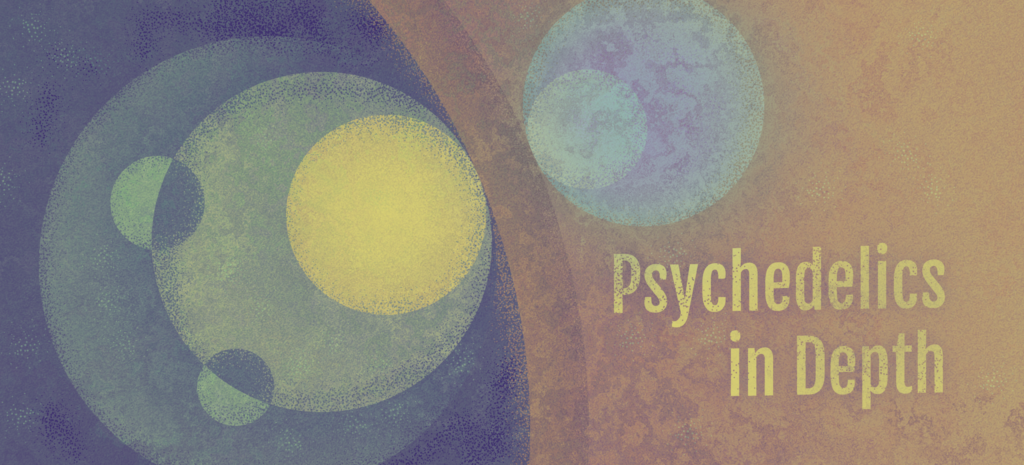Original Illustration by Martin Clarke
What is the ‘Anima Mundi’ and how can it help us understand psychedelic experiences?
This is part of our column ‘Psychedelics in Depth‘ which defines and explains depth psychology topics in the context of psychedelics.
Once upon a time, people saw nature as vividly alive, full of gods, spirits, and beings that existed beyond the realm of human culture. Nature was ensouled, and the earth was animate. In the tradition of depth psychology, this concept is known as the Anima Mundi: the Soul of the world. In this article we will explore the interplay between psychedelics, the earth, and the spirit of place.
Can psychedelics put us in touch with a more-than-human intelligence that emanates from the earth itself? Do certain places carry particular energies or “souls” which psychedelics might allow us to perceive? Finally, what role can psychedelics play situated at the crossroads of nature and culture, especially in this time of dire ecological collapse?
Ask yourself: have you ever felt immersed in some ineffable communication with an aspect of the natural world during a psychedelic experience? Have you ever felt uneasy upon setting foot in certain places, yet unable to say why? Have you ever felt a powerful sensation upon visiting an ancient redwood grove, a stone circle, or one of the earth’s many sacred sites?
Truth be told, there is an extremely high likelihood that most long-time users of psychedelics would report at least one instance of the natural world having a profound influence on their trip in ways that defy rationality.
But before we go any further, a story.
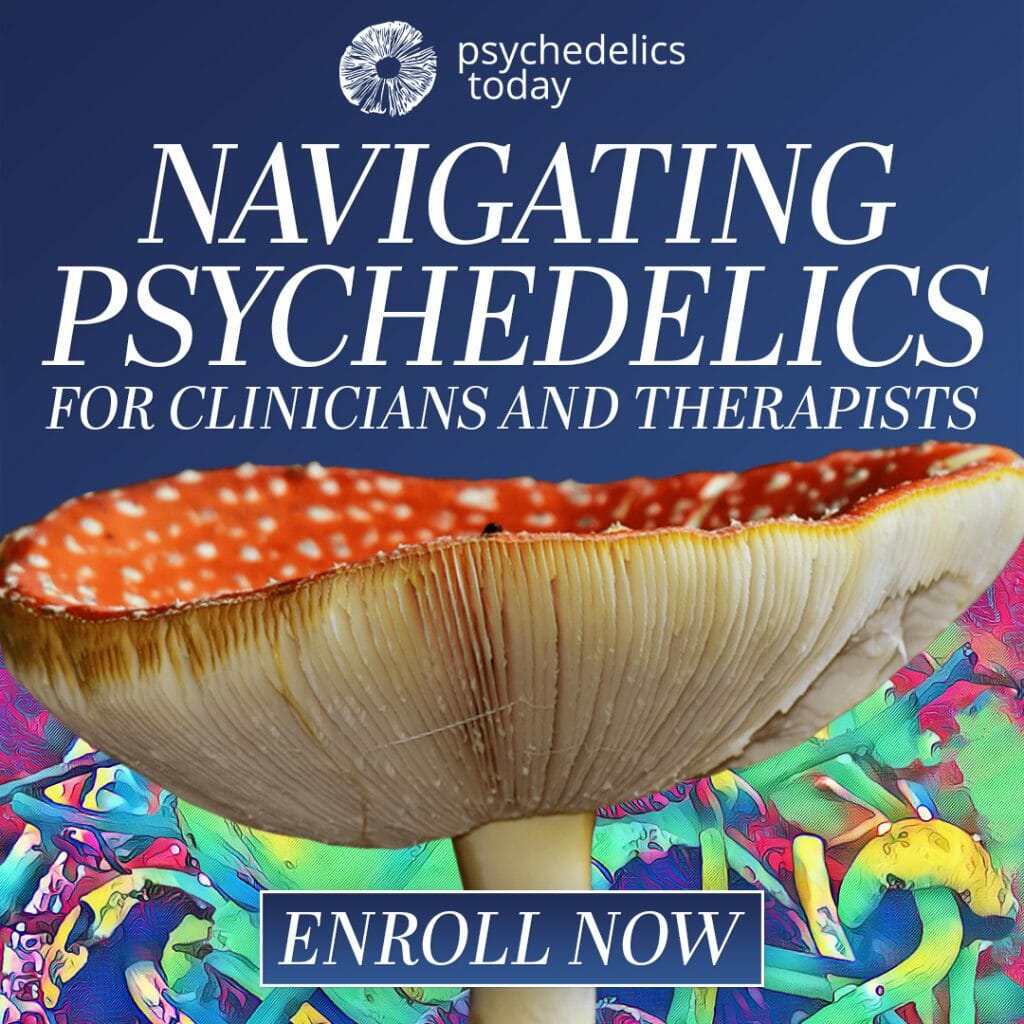
Land Memory and Psychedelics
I work as a psychedelic therapist with MycoMeditations, a legal psilocybin retreat based in Jamaica. I’m fortunate to get detailed insights into a vast array of psychedelic experiences on an almost weekly basis.
During one retreat, a woman shared about a repetitive vision she had during her trips. She explained how, on each mushroom journey, she heard a certain kind of “tribal music”—drumming and singing in an incomprehensible language. During her third and highest dose, she found herself near a campfire glimpsing the “people” responsible for this ecstatic sound. She described them in detail, especially their uniquely pointed heads. She had no explanation for this.
As it happens, the Taino, the Indigenous people of Jamaica and the wider Caribbean, practiced what is known as “cranial shaping,” a method of elongating the skulls of their newborns. This practice, done by many Indigenous peoples of the Americas, was a distinguishing cultural marker of the Taino, who lived in greatest numbers on Jamaica’s south coast—exactly where MycoMeditations happens to be based.
In fact, the very stretch of coast where our retreats occur, an area now called Treasure Beach, is known as an archaeologically rich zone for Taino pottery, confirming this region as one of, if not the most significant ancient centers for the Jamaican Taino population.
As a colleague informed me, guests having visions of “pointy-headed people” was not something new to her. She was utterly unfazed by this seemingly inexplicable synchronicity.
What do we make of this? Despite mounting research, there is still a healthy dose of mystery lingering about these plants and molecules. To discard her experience as meaningless, or simply ‘coincidence,’ either briskly diminishes its significance and robs her of potential avenues for meaning-making—the very antithesis of psychedelic therapy and integration—or reveals something concerning about the practitioner themselves.
No psychedelic facilitator worth their salt attempts to dictate the meaning behind someone’s experience.
Depth psychology would have us take seriously these moments of exchange between the human psyche and the living earth, and encourage us to lean into these liminal crossroads of perception. For if myth and medicine tells us anything, it is that the most fertile ground for growth is where our domesticated understanding of life ends and the wild unknown of the forest begins.
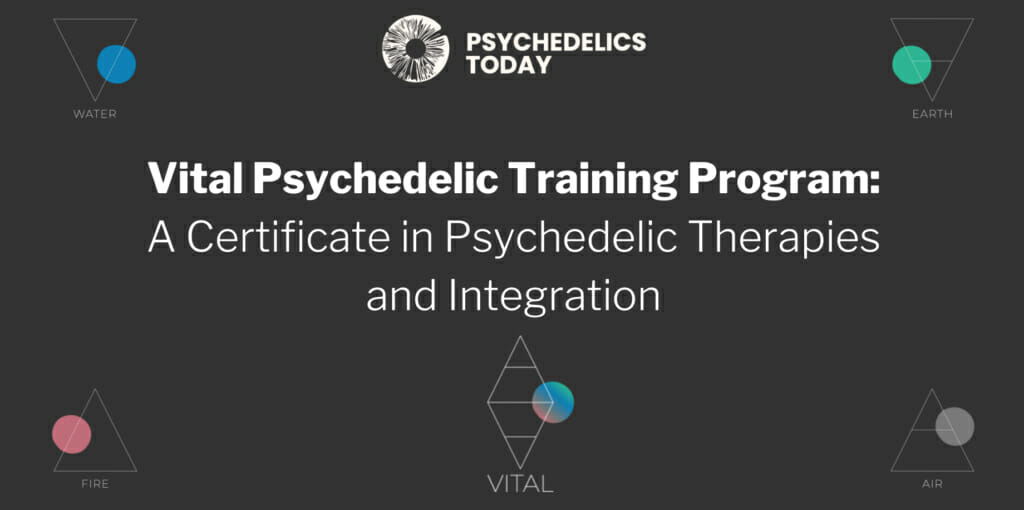
The Anima Mundi and the Ensouled World
Yet, why is it that the idea of a tree or a river or a gust of wind having something to say to us is so unsettling? Why is the notion of an ‘inanimate object’ having some claim on our senses so confronting to the modern Western psyche?
Author and professor of history, Theodore Roszak, who coined the term ecopsychology (along with counterculture, interestingly enough,) wrote in his book Voice of the Earth, “If we could assume the viewpoint of nonhuman nature, what passes for sane behavior in our social affairs might seem madness. But as the prevailing reality principle would have it, nothing could be greater madness than to believe that beast and plant, mountain and river have a ‘point of view.”
To believe that the natural world has a point of view, or is ‘ensouled’, as archetypal psychologist James Hillman explored in his book, Re-Visioning Psychology, is to understand that rocks and waterfalls contain an equally relevant quality of psyche that allows for avenues of communication between our two seemingly disparate beings.
The idea that the world itself has a Soul, and is therefore an animate, even conscious being, is one of the most radical notions within the depth tradition. Carl Jung deemed this old idea the Anima Mundi: a concept with roots going far back into esoteric religious and mystical traditions such as hermeticism, gnosticism, kabbala, and of course countless Indigenous traditions across the world.
Tracing European culture’s disconnection from this ancient notion of the ensouled earth, Jung wrote in his Collected Works Volume 11, “The development of Western philosophy during the last two centuries has succeeded in isolating the mind in its own sphere and in severing it from its primordial oneness with the universe. Man himself has ceased to be the microcosm and eidolon [image] of the cosmos, and his ‘anima’ is no longer the consubstantial scintilla, spark of the Anima Mundi, World Soul.”
The research on psychedelics’ capacity to dissolve the ego and increase one’s connection to nature places these substances in direct conversation with the climate crises, which could be seen as an equally, if not even more valuable benefit of psychedelics.
Embracing the notion of the Anima Mundi can help us navigate and integrate psychedelic experiences that blur the culturally constructed lines that our society would have us believe separates humanity from the living earth.
In this regard, the Anima Mundi and depth psychology asks us to question many pillars of European thought, specifically the legacy of Enlightenment thinkers like René Descartes, whose work marked a decisive turning point by cleaving apart any remaining threads of pagan belief, which connected European consciousness to the living earth.
The Research: Nature-Relatedness and Psychedelics
If generations of ceremonial plant medicine use by Indigenous people across the globe was not sufficient evidence, current research shows us that psychedelics can foster a greater sense of connectedness to the natural world. A 2019 study by Kettner et al. concluded that a sense of “nature relatedness was significantly increased 2 weeks, 4 weeks, and 2 years after a psychedelic experience”, and that the frequency of lifetime psychedelic use was positively correlated to a baseline sense of nature relatedness in healthy participants.
Concluding their research, Kettner et al. wrote: “With the loss of self-referential boundaries being a defining characteristic of ego-dissolution experiences under psychedelics, as well as experiences of awe in nature, it may be that the loss of perceived boundaries between the self and the other may in turn facilitate an expanded perception of self/nature continuity or overlap, reflected by increased feelings of nature relatedness.”
This discussion of “self/nature continuity or overlap,” invokes and calls into question the legacy of Descartes mentioned above. Indeed, it places these types of psychedelic experiences squarely in the other corner from centuries of Western philosophy and worldviews. In the age of global climate collapse, the implications of this research cannot be understated.
Current research on psychedelic medicine’s potential to treat many intractable mental health issues is invaluable, to be sure. As a mental health professional, I could not be more thrilled. Yet, the research on psychedelics’ capacity to dissolve the ego and increase one’s connection to nature places these substances in direct conversation with the climate crises, which could be seen as an equally, if not even more valuable benefit of psychedelics.
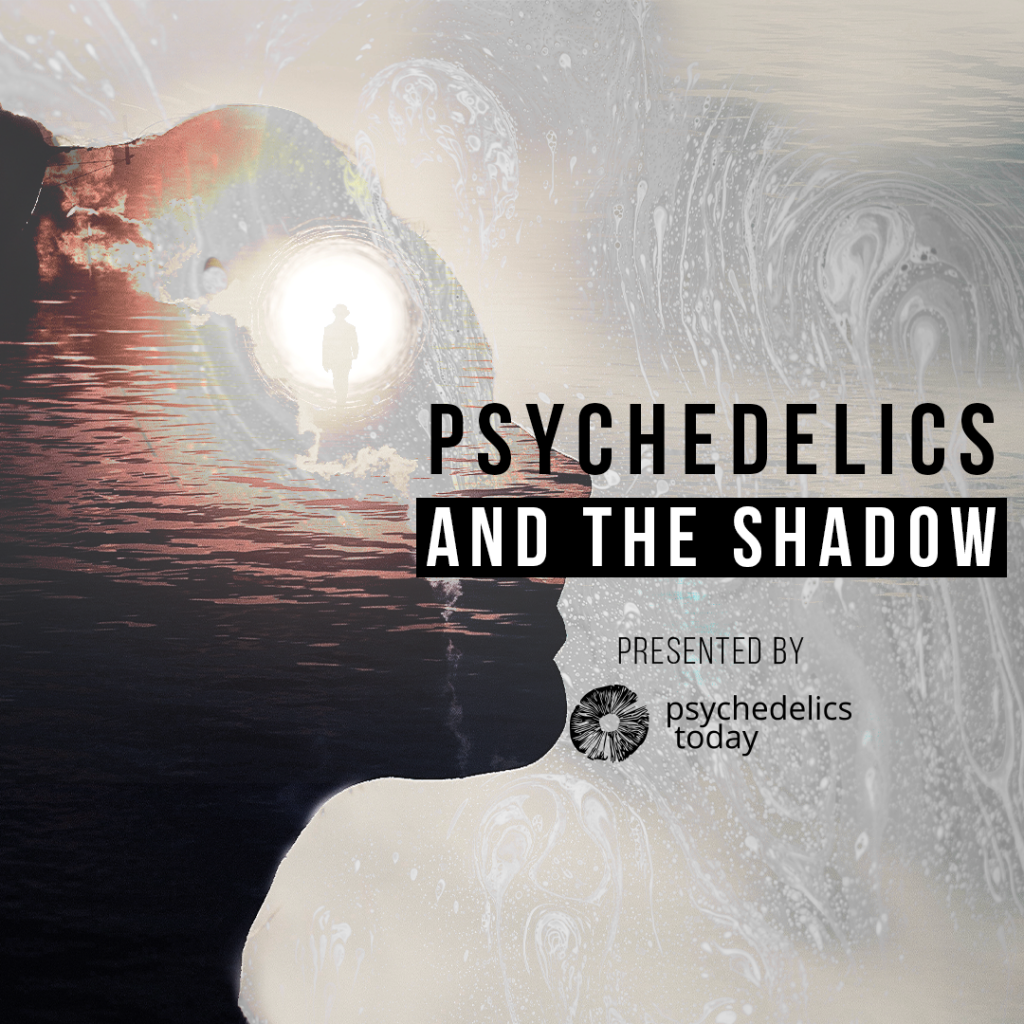
Defining Anima and Animism
Many Indigenous traditions embrace what anthropologists called an “animistic” way of perception, and have woven it into their cosmologies, ceremonies, and the very fabric of their cultural belief systems. The personification of plants and places within certain Indigenous traditions, especially terms like “madre ayahuasca”, “grandfather peyote”, or “La Pastora” (one of the many Mazatec names for Salvia divinorum) plainly acknowledges that there is more going on within the earth than an “inanimate” accumulation of minerals and dirt.
From my own time spent with Indigenous peoples from many different cultures, as well as years of formal academic study in anthropology, religion, and depth psychology, this is one of the clearest messages that I’ve received: the earth does indeed have something to say to us, if only we can remember how to listen.
Indigenous ways have always been relevant to depth psychology because of this very understanding, that the earth is undeniably ensouled, living, sentient, and worthy of respect. Psychedelics can play a crucial role in helping many people remember this humble fact, and guide us down a path which, at heart, requires a style of listening, reverence, and attention which our culture has quite painfully forgotten.
Anima Mundi for Facilitators: Relationship to Place, Grief and Soul
Now would be a reasonable time to ask how any of this applies to actually working with people navigating and integrating psychedelic experiences.
To start, establishing some form of relationship to the actual land where one’s work takes place is the bare minimum. Learn about the Indigenous people of your particular place, who they are and were, and any Indigenous place names you can manage to dig up; even better if you can learn it in person from their living descendants, and cultivate a relationship with them.
The story shared at the beginning of this article would have not meant much to me if I were ignorant of the Taino people and their particular practice of shaping their skulls. Uncovering the untold story of the land, its ecological and geological timeline, and especially its history of human migration, colonization, and modernization, must factor into a holistically grounded relationship with a place.
Sitting with the raw story of a place often leads one down the dark stairwell of grief. This is a good thing. But it is wise to be prepared for it, and to know how to support others who may find themselves immersed in a story whose weight might be much more than they can bear. Grief, however, can be one of the most profound gateways to feeling, and therefore to the Soul. Psychedelic experiences which bring one face to face with land-grief are important because they are emanations from the place itself. One could say that it is one of the earth’s many attempts to speak to human beings—a process which we have conditioned ourselves to largely ignore.
Finally, cultivating one’s own relationship to the natural world, to the unique curvature and temperament of a place, will inform what occurs when the mists of the otherworld begin to encircle one’s perception. Personally, before any psychedelic journey, I offer some tobacco, and ask permission from whatever ancestors called that place home. You wouldn’t just wander into someone’s house without knocking first. There are many reasons for doing this, the least of all being that it’s simply polite.
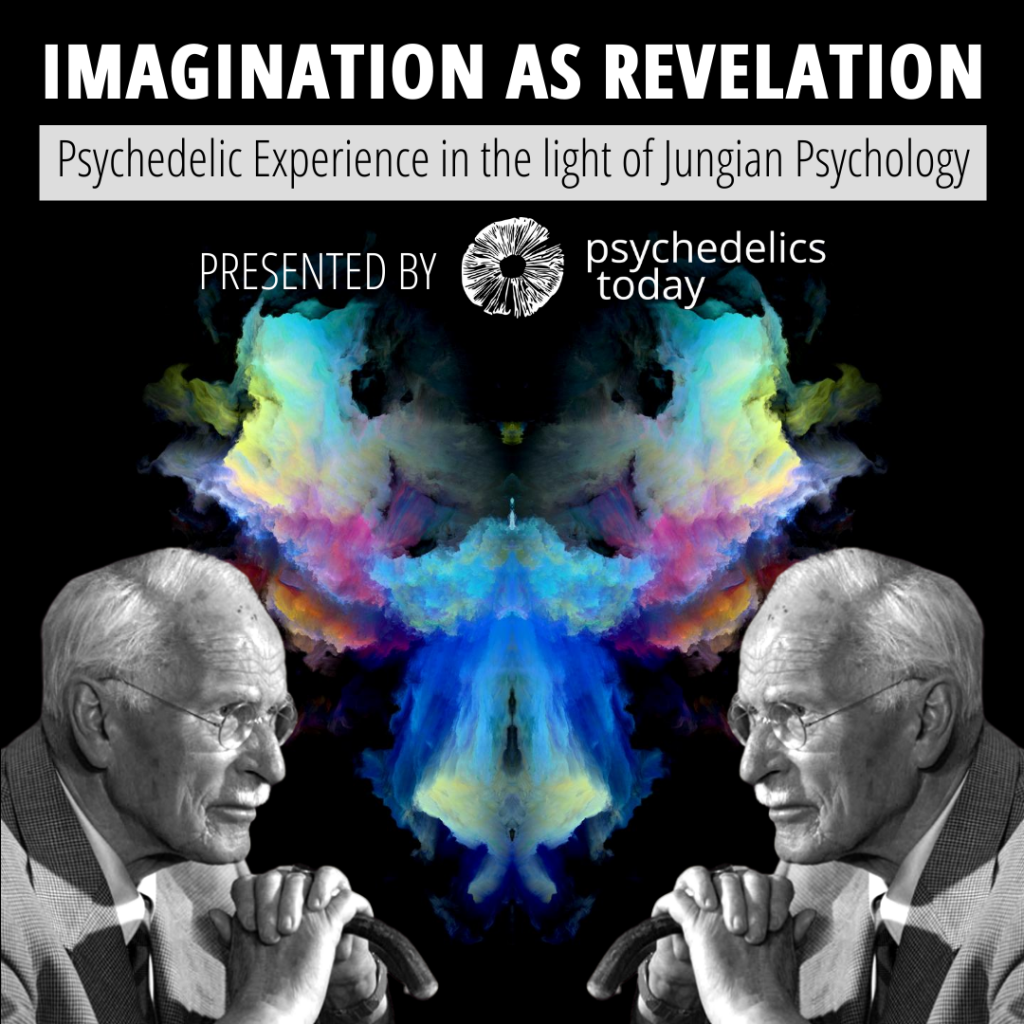
Closing Thoughts on Anima Mundi and Psychedelics
Psychedelics can provide a key to unlocking our culturally fractured and traumatized relationship to the natural world, and its indwelling Soul, the Anima Mundi. Psychedelics have the capacity to dissolve the ego and open one to experiences of awe in nature, which in turn help a sense of greater nature relatedness take root.
As individuals, we need awe-inspiring encounters with the Anima Mundi which crack open the ego and reveal the Soul. As a culture, we are in dire need of a renewed sense of reverence and respect for the more than-human-world, which psychedelics may be able to instill in our increasingly adrift society. And as ensouled beings, we need deeply personal, Soul-level encounters with something greater than ourselves, which help us remember how to listen to the language being sung all around us.
The other road, I’m sorry to say, is bleak.
The poet-philosopher Goethe knew this when he wrote, “And so long as you haven’t experienced this: to die and so to grow, you are only a troubled guest on the dark earth.”
About the Illustrator
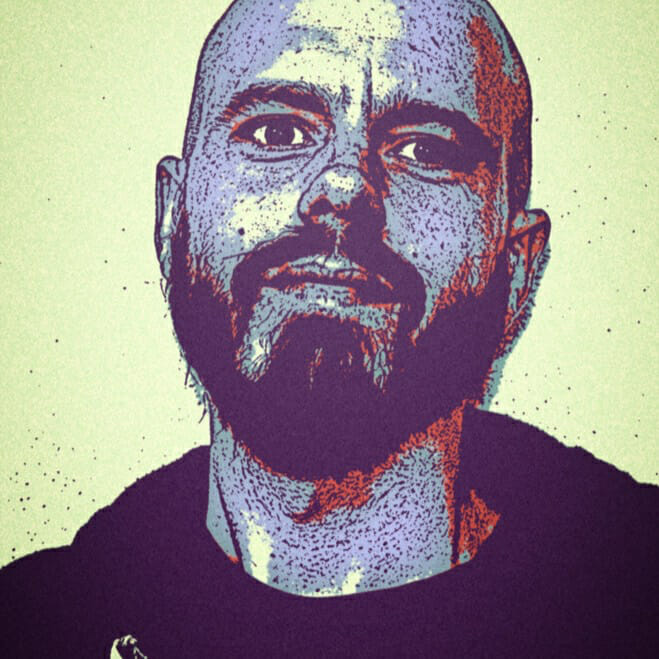
Martin Clarke is a British Designer and Illustrator from Nottingham, England. Specializing in branding, marketing and visual communication, Martin excels at creating bespoke brand identities and striking visual content across multiple platforms for web, social media, print and packaging. See more of his work here.
